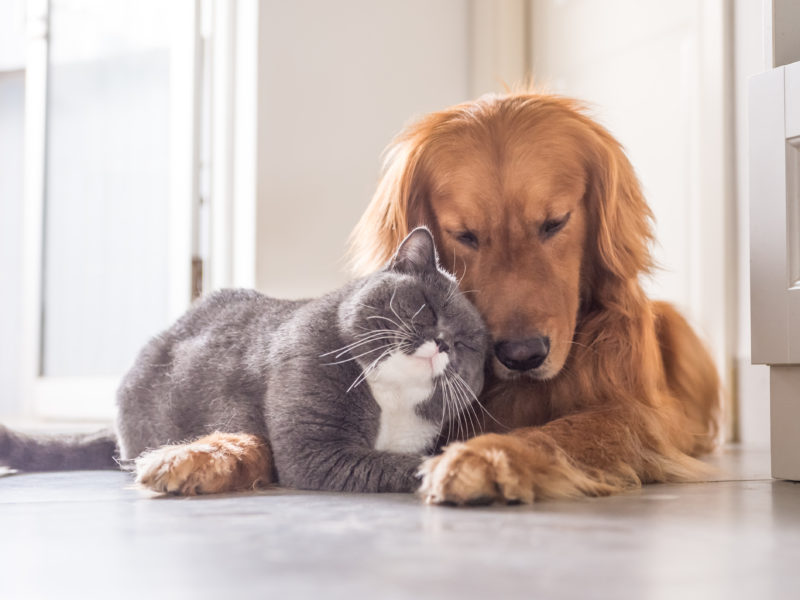Beginning With Flea And Tick Products.
According to the Natural Resources Defense Council, many of the chemicals allowed for use on our pets are linked to health concerns in human beings – things like respiratory problems, cancer, skin irritation, GI disorders and neurological issues. However, pet product manufacturers are not required to list ingredients on labels.
It Goes Beyond Our Pet’s Exposure.
Products that include imidacloprid and dinotefuran can be toxic to the developing brains of young children. Tetrachlorvinphos (TCVP) is a pesticide shown to be toxic to the human nervous system and can increase the risk of learning disabilities in children. Another chemical in the organophosphate pesticide family, chlorpyrifos, is also found in flea collars and powders. Children get the residues on their hands playing with their pets which are then absorbed through the skin or ingested when they put their hands in their mouths. The developing infant is also at risk when pregnant women are exposed.
The Natural Resources Defense Council urges us to be wary of all flea collars due to the fact that they can contain dangerous insecticides. Permethrin and pyrethrin are two more insecticides commonly found in flea and tick products. And be forewarned, these chemicals are also toxic to cats. There are safer options to control fleas, ticks, and mosquitoes at Olive Green Dog.
Natural Isn’t Always Nice.
The American Kennel Club warns that some essential oils are poisonous to dogs, whether ingested by mouth or spread on the skin. For a list of essential oils that are harmful to pets, visit Michelson Found Animals where you’ll find a list of these oils categorized for both cats and for dogs. At Dogs Naturally you’ll find recipes for making your own flea and tick repellents with essential oils that are safe for animals, along with a list of further chemicals to avoid in commercial products. In addition, you may want to visit Dr. Joanna De Klerk’s website for a Beginner’s Guide to Essential Oils for Dogs!
Pet Food Scorecard.
We’re concerned about what’s in the food that we feed our children. Our beloved pets are also our “children” so shouldn’t we also take a close look at what we are feeding them? Cornucopia Institute has developed a guide that reveals whether synthetic preservatives were added to your brand of pet food. Were food dyes, carrageenan, or rendering products also added? And what are the actual ingredients in your pet’s food? Please visit Cornucopia and pass it along!
Industrial chemicals are not only in foods that humans consume, they’re also found in pet foods and animals are just as vulnerable to the effects of the chemicals as we are. A recent study found that BPA in the bloodstream of dogs nearly tripled when they switched to canned dog food. In a study completed at the Ecology Center in Ann Arbor, almost 95% of cat food cans tested had a polyvinyl chloride-based coating, while 81% of dog food cans had a BPA-based coating. Click on the link to see how your pet foods rank.
And it’s not just pet food that can be harmful, some of our people foods are toxic to our pets. Visit the Animal Poison Control Center link for 20 people foods to avoid sharing with animals.
Keeping Pets Clean.
Business Insider posted an article on the best shampoos, collars, beds, crates, brushes, and toys for dogs. My Pet Needs That lists some of the best cat shampoos for bathing felines, but their website also offers other articles on cat’s health conditions, accessories, and what they should eat. My Pet Needs That also has links to the same information for our dogs, fish, birds, reptiles and other small animals.
Dogs Naturally provides information on 20 dog shampoo ingredients to avoid and why, along with recommendations to some of the most highly recommended shampoos. 4Legger Organic Dog Shampoo shows up as one of the best in both their review and in many others. With the addition of lemongrass and rosemary, using 4Legger acts as a natural insect repellent. If you scroll down on the link you’ll find more information on locating pet safe ice melts, the risks of blue-green algae to your dog, and lots of other informative posts.
Lastly, The Safest Litter.
Only Natural Pet provides information on the safety of natural cat litters, as well as any environmental considerations there may be, while rating the performance and consistency of cat litters made from corn, wheat, pine, grass seed, clay and silica.
Get The Apps.
The National Environmental Health Association website helps you find where ticks and other vectors are located by State. Along with a clear image of the pest, it also provides information on diseases transmitted.
Do you know that there is an app for Tickborne Diseases from the Centers for Disease Control? This smartphone app provides photos to help you identify ticks.
The American Society for the Prevention of Cruelty to Animals has a free mobile app from the Animal Poison Control Center (APCC) that helps owners quickly identify over 300 potential everyday hazards for horses, cats, dogs and birds, and provides crucial information about the severity of the problem along with the critical next steps to take when an animal has been exposed.



 What’s Best For Below?
What’s Best For Below?